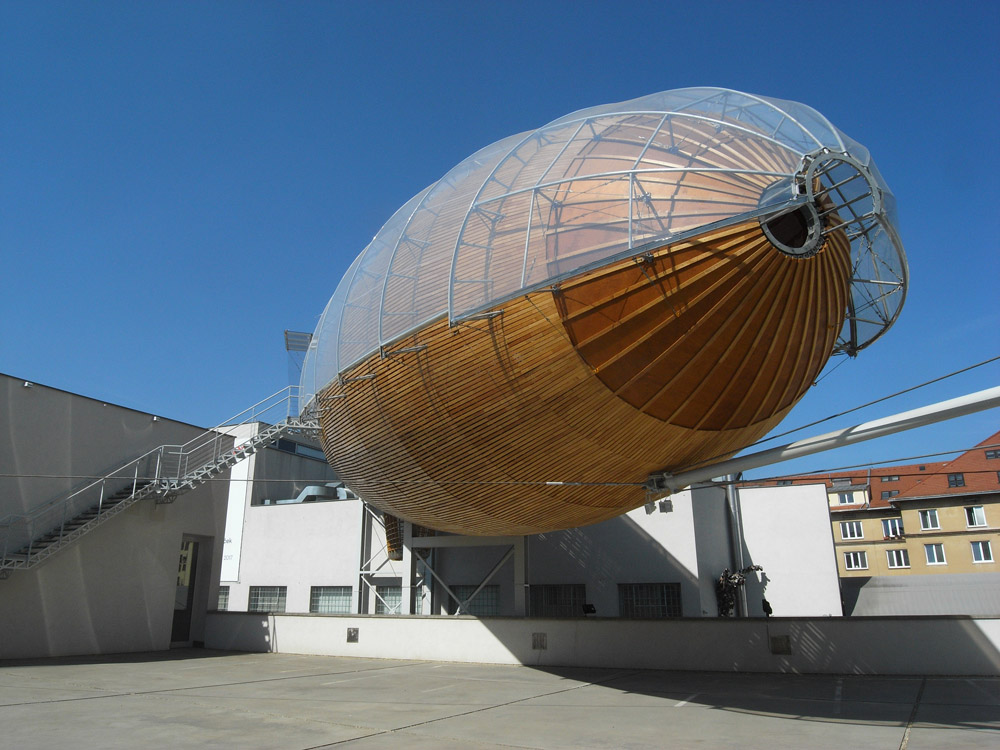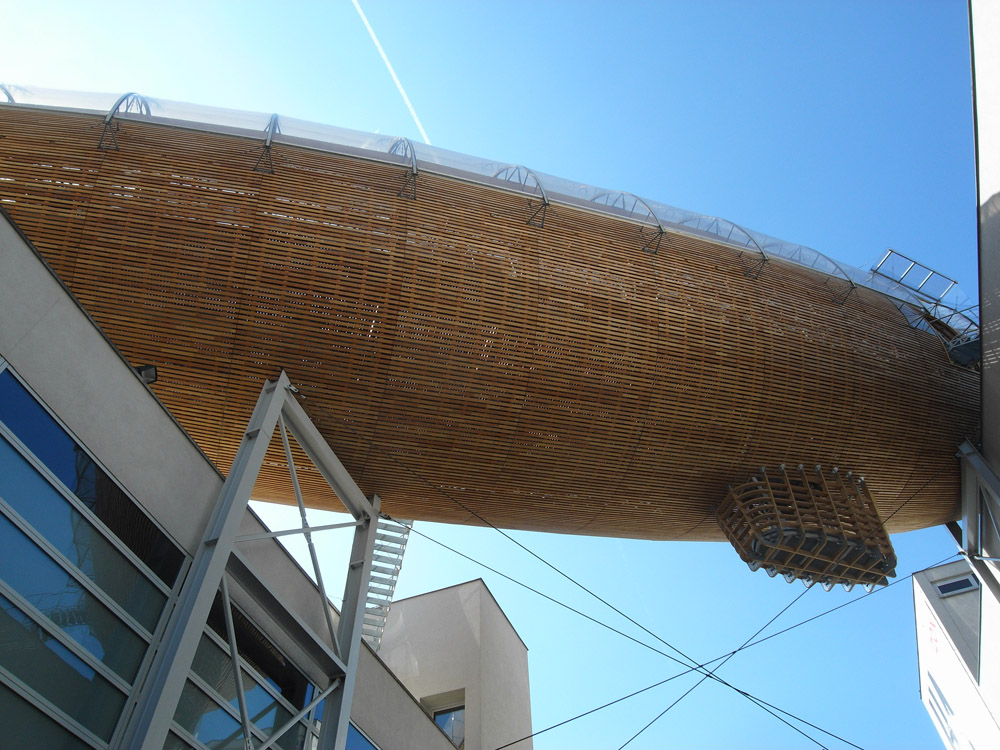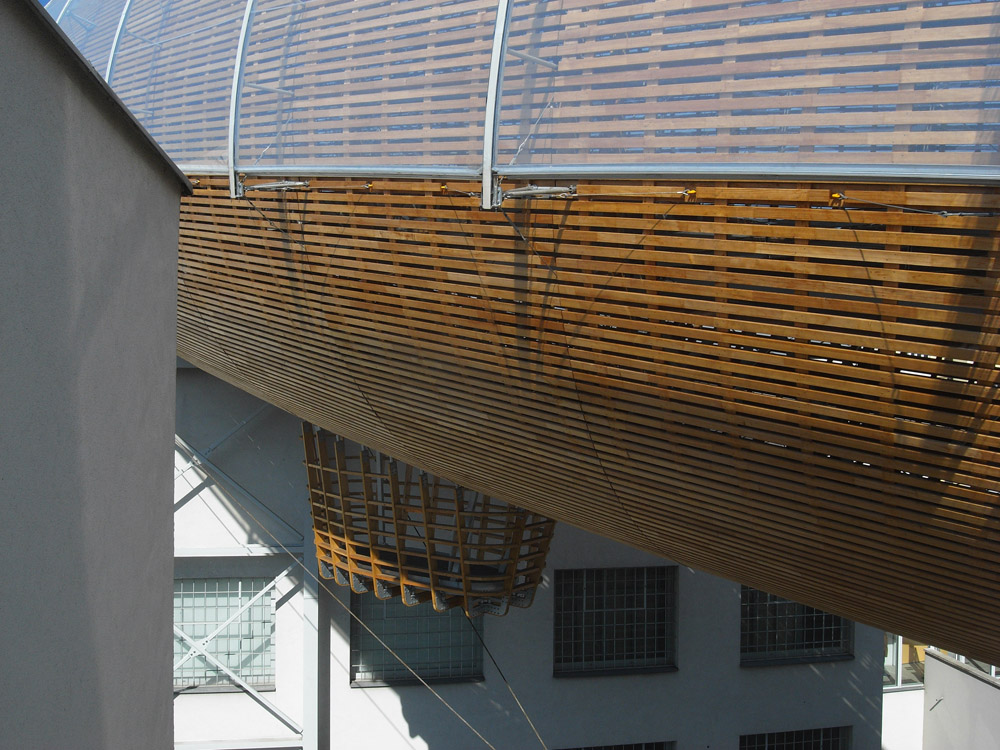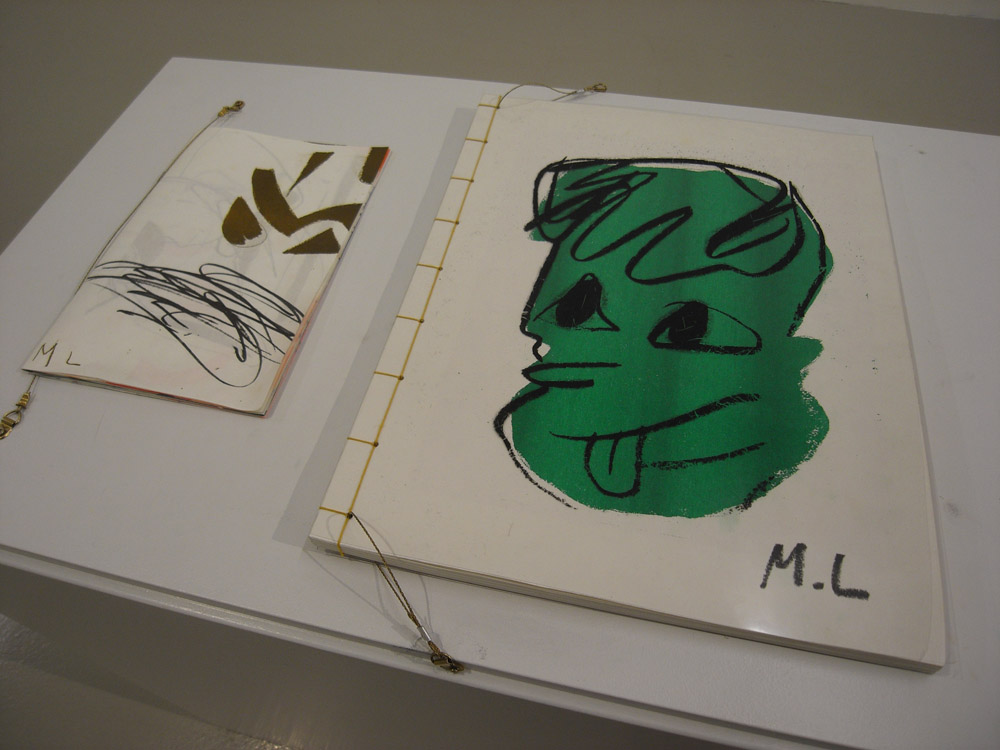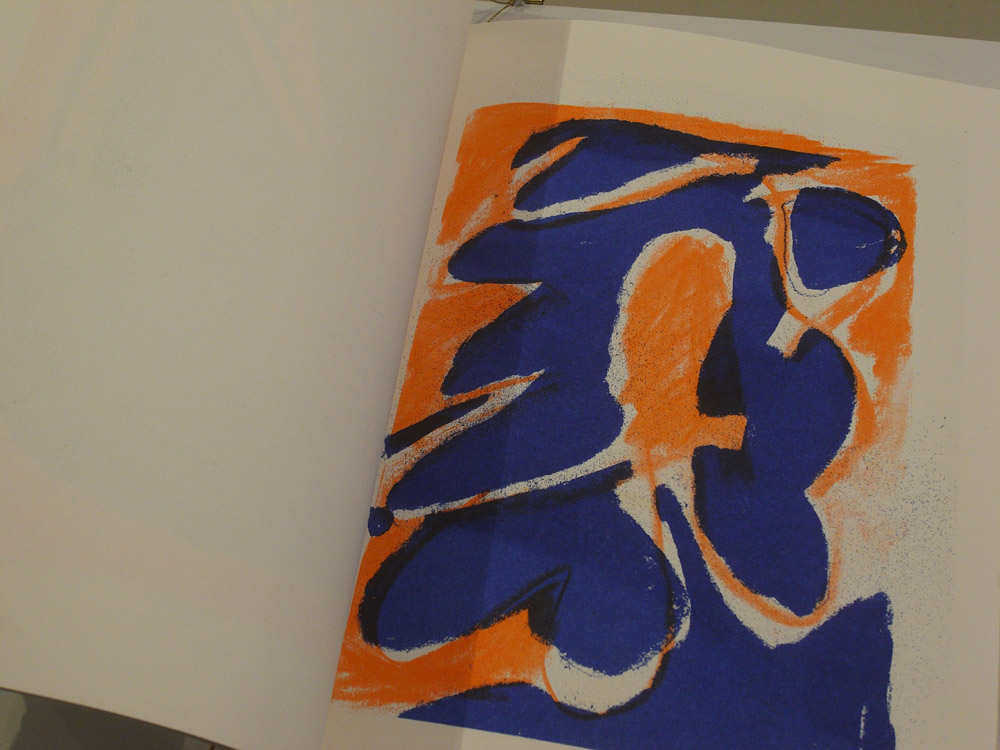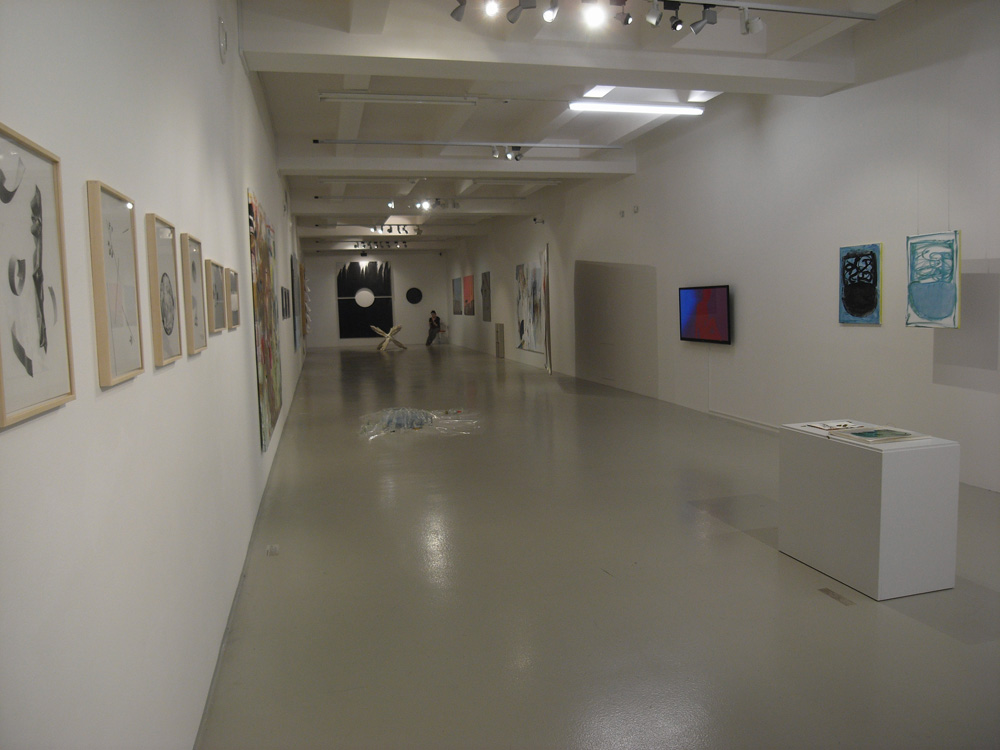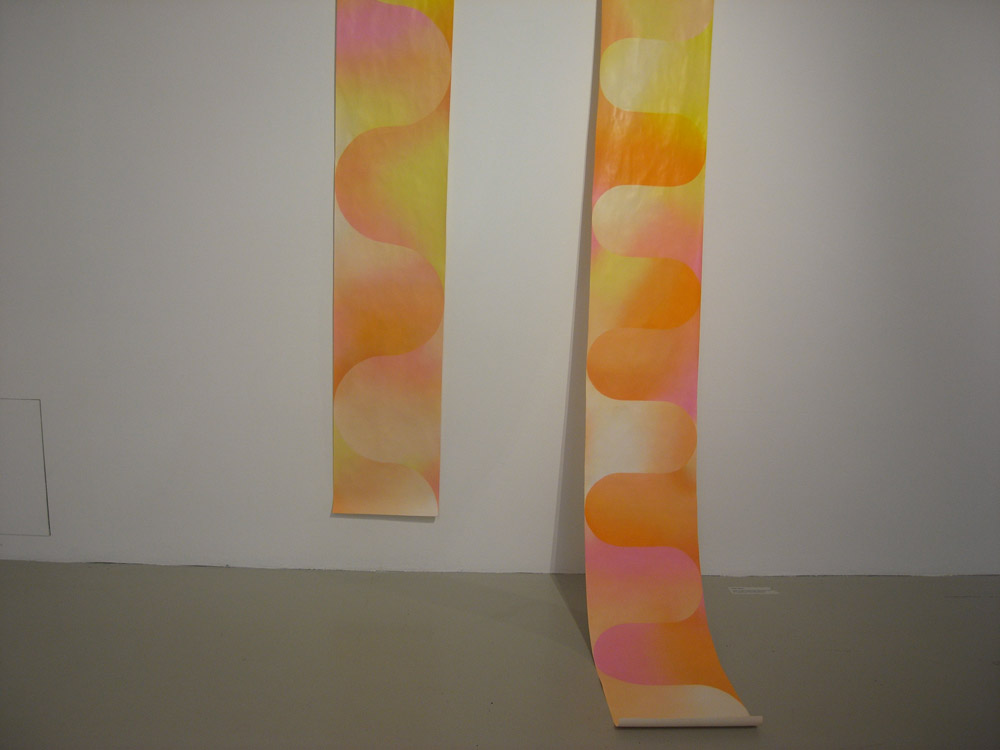Prague, March 17 – May 22, 2017 (VII Day), February 10 – May 8, 2017 (307), http://www.dox.cz/en/
I stopped by in DOX more by coincidence than plan. The largest exhibition space was closed in preparation of the upcoming (and now already opened) Big Bang Data show. Nevertheless, there was still enough to see and enjoy.
First of all, I was struck by the new architectural addition to the already quite vast and complex space of DOX: A huge airship-like structure that appears to be floating above the central courtyard of the art space. The Airship Gulliver is on one hand an architectural feat, and on the other it is a functional space that can be used for performances or lectures. Given the amount of different spaces in DOX, including a large lecture/concert hall, the primary motivation for the addition was probably aesthetic rather than functional: Making DOX even more beautiful. And it definitely succeeded in this. It will be also interesting to see how this very specific piece of architecture will survive during the four seasons of the year. The authors of the piece are listed as Leos Valka (DOX founder), Martin Rajnis (architect) and David Kubik (younger co-worker of Rajnis).
An exhibition introducing the background and documentation related to the building of the airship fell a bit flat and could be reduced in size or made more engaging.
The architectural theme continued in another exhibition, Architecture of the VII Day, which dealt with the topic of self-funded and self-constructed churches in Poland during the communist and post-communist time period. The topic was interesting and it highlighted a fact that is not that well known to the general public. The installation was clean and precise, but while walking through it, I slowly became a bit bored, as the layout scheme and text snippets used the same cookie-cutter layout over and over again – a typical problem of many architecture and photography exhibitions.
The last show balanced out the architectural overload through presenting a more free and intuitive side of art. It displayed the works from students of the painting studio (room no. 307, headed by Jiri Cernicky and Marek Meduna) of the Academy of Arts, Architecture and Design in Prague. At first sight, the show did not look that exciting, but as one spent time within the space, there was enough things to ponder at and discover. Given the showcase nature of the show, there was something for everyone, but not each piece could live up to the same standards and tastes. Yet it was a balanced selection, and I did find some interesting pieces there (My favorite was Martin Lukac’s artist’s book and paintings).
Overall, every visit to DOX has been worthwhile so far. Some of the exhibits put me off at first, as I am not overly enthusiastic about the topics, but visiting the space, walking around, and discovering the shows bit by bit brings about a pleasurable experience.
